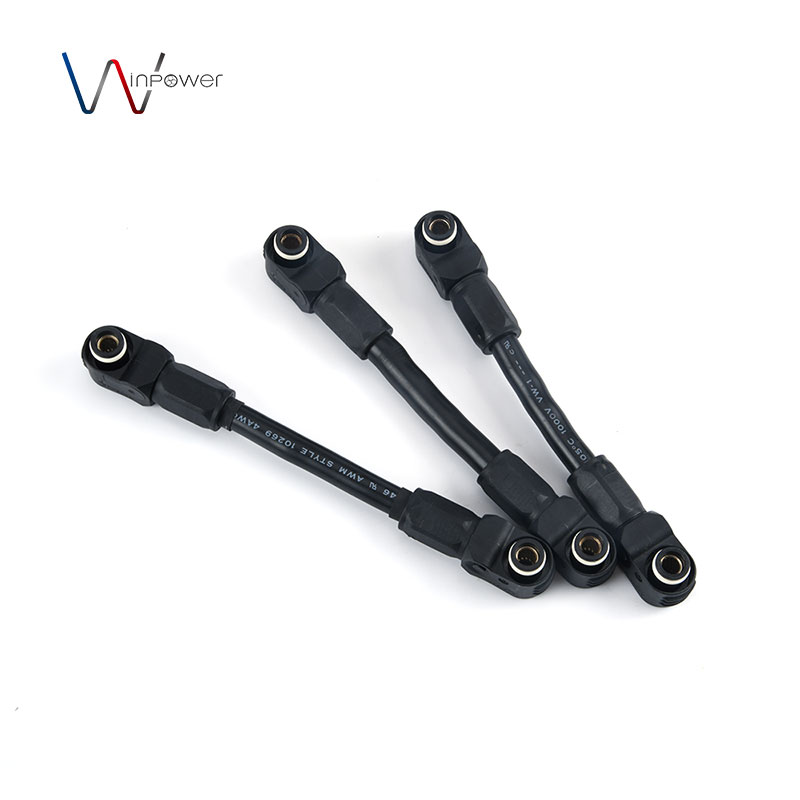Custom Industrial Robot Harness
Product Description:
The Industrial Robot Harness is a vital wiring solution that ensures seamless communication, power transmission, and control within automated robotic systems. Designed for high-performance and reliability in industrial environments, this harness integrates all critical components of a robotic system, including motors, sensors, controllers, and actuators. It provides the electrical and signal pathways needed for precise and efficient robot operation in industries like manufacturing, assembly, welding, and material handling.
Key Features:
- High Flexibility: The harness is designed with ultra-flexible cables that can withstand constant movement and bending without compromising performance, making it ideal for robotic arms and dynamic parts.
- Durability and Longevity: Built from high-quality materials, the harness resists wear, chemicals, and abrasion, ensuring long-term reliability in harsh industrial environments.
- EMI and RFI Shielding: The harness incorporates advanced electromagnetic interference (EMI) and radio frequency interference (RFI) shielding to protect sensitive data transmission and ensure signal integrity in high-noise environments.
- Heat and Cold Resistance: Engineered to operate effectively in extreme temperatures, the harness is insulated to resist high heat near motors and actuators, as well as cold conditions in specific industrial settings.
- Lightweight Design: The harness is constructed with lightweight materials to minimize drag on robotic systems, contributing to smoother and faster robotic movements.
- Secure Connectors: High-quality connectors ensure firm, vibration-proof connections, reducing the risk of signal loss or electrical failure during intensive robotic tasks.
Types of Industrial Robot Harnesses:
- Power Supply Harness: Ensures stable power delivery from the main power source to the robot’s motors and actuators, supporting continuous operation.
- Signal & Data Harness: Connects sensors, controllers, and other components, ensuring precise communication for real-time control and decision-making in the robotic system.
- Control System Harness: Links the robot’s control system with motors and actuators, enabling smooth operation and accurate movement control.
- Communication Harness: Facilitates the transmission of data between the robot and external systems, such as controllers, servers, and networks, ensuring coordinated automation.
- Safety System Harness: Connects the robot’s emergency stop buttons, sensors, and other safety systems, ensuring compliance with industrial safety standards.
Application Scenarios:
- Manufacturing & Assembly: Ideal for automated robots in manufacturing lines, ensuring reliable power and data transmission for precise assembly, machining, and material handling tasks.
- Welding & Cutting: Suitable for robotic systems used in welding, cutting, and other high-temperature applications, where durability, flexibility, and heat resistance are critical.
- Material Handling & Packaging: Supports robots in warehouses and logistics centers, where high-speed movement, precise positioning, and real-time data communication are essential.
- Automotive Industry: Designed for robots in automotive manufacturing plants, where heavy-duty, flexible harnesses are needed to power robots performing tasks such as painting, welding, and assembling.
- Food & Beverage Industry: Suitable for robots in food processing plants, where hygiene, reliability, and resistance to moisture and chemicals are critical requirements.
- Pharmaceuticals & Healthcare: Used in robotic systems for medical device manufacturing, drug packaging, and automation in cleanroom environments.
Customization Capabilities:
- Length and Gauge Customization: Available in various lengths and gauges to accommodate different robotic system configurations and power requirements.
- Connector Options: Custom connectors can be selected to match specific robotic components, ensuring a perfect fit for different sensors, motors, and controllers.
- Cable Sheathing & Insulation: Customizable sheathing options, including chemical-resistant, heat-resistant, and moisture-proof materials, to meet the unique demands of each industrial application.
- Wire Color Coding & Labeling: Custom color-coded and labeled wires for easier installation and troubleshooting during maintenance.
- Specialized Shielding: Customizable EMI, RFI, and thermal shielding options for enhanced protection in environments with high interference or extreme temperatures.
Development Trends: As industrial automation continues to evolve, the design and functionality of industrial robot harnesses are adapting to meet new demands and challenges. Key trends include:
- Miniaturization: As robots become more compact and precise, harnesses are being designed with smaller, more efficient cables and connectors, reducing space usage while maintaining performance.
- High-Speed Data Transmission: With the rise of Industry 4.0 and the need for real-time communication between machines, harnesses are being optimized for higher data transmission speeds, ensuring seamless coordination in automated factories.
- Increased Flexibility: With the growing use of collaborative robots (cobots) that work alongside human operators, harnesses are being developed with even higher flexibility to support more dynamic and versatile movements.
- Sustainable Materials: There is a push toward eco-friendly materials in harness manufacturing, aligning with the broader industrial trend of reducing environmental impact.
- Smart Harnesses: Emerging smart harnesses integrate sensors that can monitor performance and detect wear or damage in real-time, enabling predictive maintenance and reducing downtime.
Conclusion: The Industrial Robot Harness is an essential component for any modern automated system, offering durability, flexibility, and customization to meet the unique demands of industrial environments. Whether used in manufacturing, logistics, automotive production, or specialized fields like healthcare and food processing, this harness ensures the reliable operation of robotic systems. As the industrial robotics sector continues to advance, the development of lightweight, high-speed, and smart harness solutions will play a key role in shaping the future of automation.















